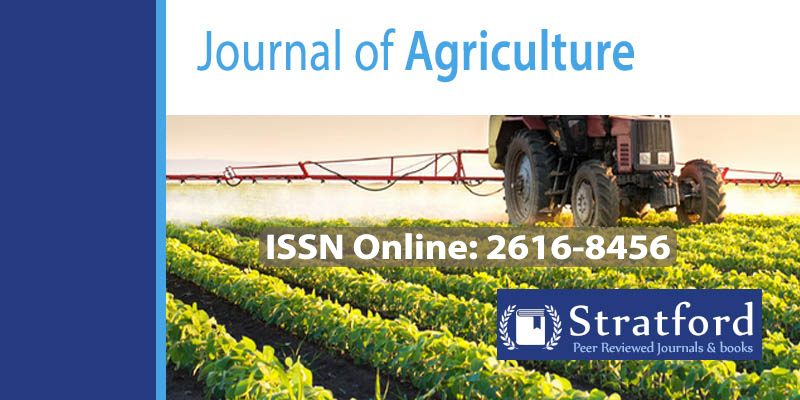A comparative Analysis of Pure Bufflow and Cow Milk: Pespetive from Pakistan
DOI:
https://doi.org/10.53819/81018102t4106Abstract
Buffalo is playing a critical role in the national economy by creating milk, meat and draft power. Out of all out milk delivered in the Pakistan in 2020, buffalo contributed approximately 68 %, trailed by steers (27%) and sheep/goat/camel (5%). Because of high fat substance of bison milk, it is the most favored species in Pakistan. In any case, there are sure issues identified with this species, for example, late period of development, long calving stretch and quiet warmth. In Pakistan, Pure Buffalo milk is sold by the local dairy farmers in the form of loose milk only. This study discussed the importance and benefits of buffalo milk in comparison of cow’s milk and the real opportunities for the new entrepreneurs and startups who want to setup their own business in Pakistan. Pakistan's yearly milk creation in 2015-16 was around 54 million tones, making it one of the world's significant milk makers. Buffaloes and cows are the significant milk delivering creatures, with 62% milk delivered by buffaloes and 34% by dairy animals. In the course of recent years, milk creation in Pakistan has ascended by 36 %. Farmers are not well equipped to avail benefits. India and Pakistan produce about 80% of all buffalo milk worldwide, followed by china, Egypt, and Nepal, where you find more dairy buffaloes than cows (Ariane Lang, 2020). Buffalo is viewed as the dairy creature for 21 century because of its higher flexibility and efficiency in the changing climatic conditions. There is a huge assorted variety in the Buffalo hereditary assets and south Asia is the home of profoundly yielding source promising bison type of Murrah and Nail Ravi. The analysis has shown that milk produced by buffalos is the best, as it carries 60% less cholesterol compared to cow milk.There is a strong reason why large companies only sell cow milk in packaged form even there is a huge demand for buffalo milk. The study concludes that Buffalo milk has a higher fat, protein, lactose, vitamin, and mineral content than cow's milk. It's also whiter and has a thicker consistency, which makes it perfect for the production of fat-based dairy products. Moreover, Cow milk differs from buffalo milk in richness and composition. Buffalo milk has lower cholesterol but more calories and fat compared with cow's milk.
Keywords: Buffalo milk, Cow milk, Cholesterol, Packaging, Marketing
References
Brar, P. S., Mehta, N., Singh, A., Sivakumar, S., & Phand, S. (Eds.). (2021). Value Addition of Milk and Meat: A Push to Entrepreneurship [E-book]. Hyderabad: Guru Angad Dev Veterinary and Animal Sciences University, Ludhiana & National Institute of Agricultural Extension Management, Hyderabad, India.
Hashmi, H. A., Belgacem, A. O., Behnassi, M., Javed, K., & Baig, M. B. (2021). Impacts of Climate Change on Livestock and Related Food Security Implications—Overview of the Situation in Pakistan and Policy Recommendations. Emerging Challenges to Food Production and Security in Asia, Middle East, and Africa, 197-239.
Qazalbash, M., Masud, T., Ahmad, A., Hayat, R., Ibrahim, M., Mujtaba, A., ... & Asad, M. J. (2021). Diversity of lactic acid bacteria associated with raw yak (Bos grunniens) milk produced in Pakistan. J. Anim. Feed Sci, 30, 42-51.
Rehman, M. A. U., Ashfaq, K., Ashfaq, T., Ghaffari, M. A., Ali, N., Kazmi, F., & Sohail, N. (2022). The Antithrombotic Potential of Bioactive Peptides Induced by Buffalo Milk Probiotic Cheddar Cheese: Potential of Bioactive Peptides Induced by Buffalo Milk Probiotic Cheddar Cheese. Pakistan BioMedical Journal, 324-328.
Saeed, R., Kamran, M. A., Qasim, M., Naheed, S., & Mahmood, I. (2022). Determinants of Livestock Herd Size in Mixed Cropping Zone of Punjab-Pakistan. Journal of Economic Impact, 4(1), 150-157.
Sana, S., Qadir, A., Mumtaz, M., Evans, N. P., & Ahmad, S. R. (2021). Spatial trends and human health risks of organochlorinated pesticides from bovine milk; a case study from a developing country, Pakistan. Chemosphere, 276, 130110.
Sattar, A. (2022). What is Holding Back Milk Production Potential in Pakistan?.
Sen, M. (2021). Food Chemistry: Role of Additives, Preservatives, and Adulteration. Food Chemistry: The Role of Additives, Preservatives and Adulteration, 1-42.
Tariq, M. (2022). Practices of Clean Milk Production, Management and Decent Work in Faisalabad, Punjab, Pakistan.
Ullah, S., Brummer, B., & Ahmed, U. I. (2021). Role of extension services in enhancing efficiency of market oriented dairy farmers: An evidence from Punjab, Pakistan. Sarhad Journal of Agriculture, 37(4), 1314-1322.
Vargas-Ramella, M., Pateiro, M., Maggiolino, A., Faccia, M., Franco, D., De Palo, P., & Lorenzo, J. M. (2021). Buffalo milk as a source of probiotic functional products. Microorganisms, 9(11), 2303.
Waqas, M., Pervaiz, W., Zia, K. M., & Iqbal, S. Z. (2021). Assessment of aflatoxin B1 in animal feed and aflatoxin M1 in raw milk samples of different species of milking animals from Punjab, Pakistan. Journal of Food Safety, 41(3), e12893.


